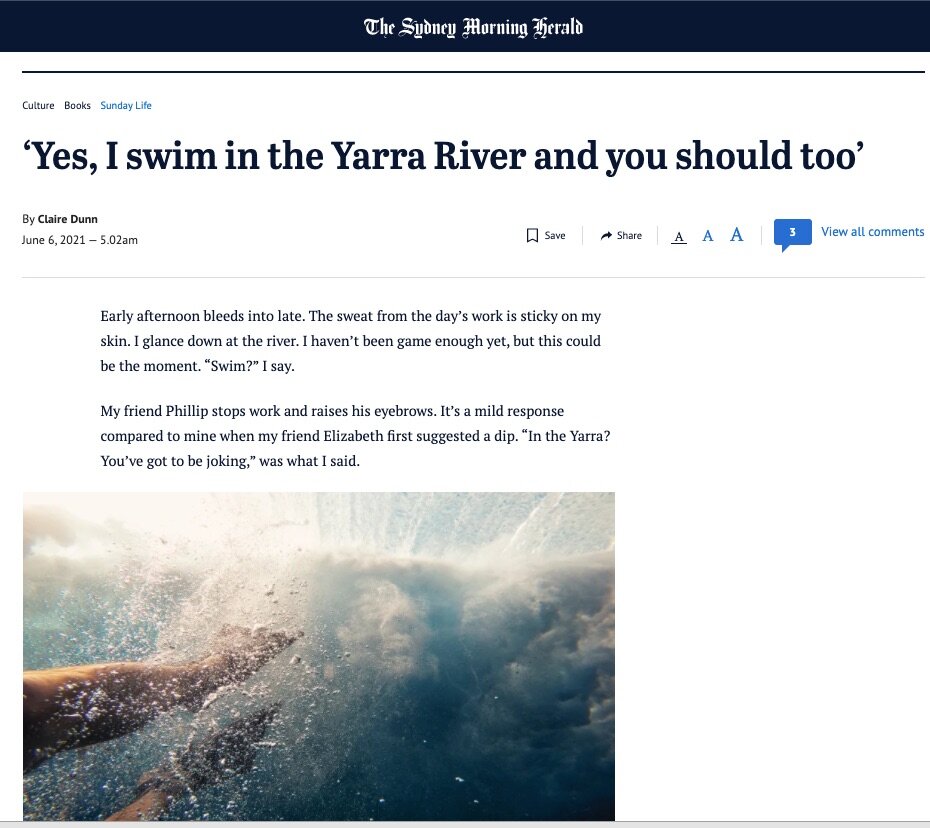We’re a famously nature-loving nation, yet 86 per cent of Australians call the city home. Amid the concrete and the busyness, how can we also answer the call of the wild?
Once upon a time, a burnt-out Claire Dunn spent a year living off the grid in a wilderness survival program. Yet love and the possibilities of human connection drew her back to the city, where she soon found herself as overscheduled, addicted to her phone, and lost in IKEA as the rest of us. Given all the city offers — comfort, convenience, community, and opportunity — she wants to stay. But to do so, she’ll have to learn how to rewild her own urban soul.
Join Claire as she sits by and swims in the brown waters of the Yarra River, forages for undomesticated food in the suburbs, and explores many other practices in a quest for connection. To make our human hearts whole, she realises, we’ve all got to pay attention and learn to belong to our cities — our land. This is where change begins. For ourselves and for the world.
Epilogue
Living in the New Normal
2020 and after
‘How are there no mushrooms at all?’ I say, squatting down to look under the mat of pine needles on the forest floor. Scattered around me are shreds of decapitated fungus, yellowing white against the dark brown of the decaying needles. ‘Looks like a trawler’s been through.’
‘Hmmm, yeah, it does look a bit trashed,’ says Taj, still optimistically clutching her large empty cane basket. A grey shrike-thrush echoes out a single bell-like chime in the otherwise eerily quiet pine forest. A breeze whistles softly through needles up high.
‘You look like someone from a movie set,’ I say, pausing to take in Taj’s long, flowing maroon dress, black monster boots, Mediterranean skin, mass of curly blonde hair, and knife hanging from her belt.
‘Maybe the working title is “Starving in the Pines”,’ she jokes, and I laugh, my belly rumbling too. This mushroom mission isn’t a tourist daytrip: we’re counting on it for food. It did occur to me when driving out here that the Monday after the first sunny autumn weekend since the lifting of COVID restrictions could be about the worst forager’s plan, with every cabin-fevered family looking for a wholesome outing close to the city. Seems like I was right — we haven’t found a single saffron milk cap.
‘Look! Slippery jacks!’ Taj calls out excitedly. The brown and slimy tops of a ring of the young and edible slippery-jack mushrooms are barely visible beneath the hat of needles they’ve pushed up from the forest floor. A small search in the same area reveals another few rings, perhaps too camouflaged for the weekend hoards to find. We harvest a dozen, leaving the youngest ones, and wander further to collect another half-dozen.
Taj pulls a thermos and two ceramic mugs out of her bag, and we nestle in with our backs against the hard shingles of the pine tree so that our shoulders are touching. The steaming liquid smells like something I imagine emanating from an underground apothecary. I take a sip. It’s sweet and so earthy it’s like Taj has nipped off a root and ground it up in my mug. My hunger pains are quelled instantly.
‘Roasted acorn, bay leaf, chicory root, and honey from your bees. Pretty good, hey?’ Taj says.
‘It’s ridiculously good,’ I say, wrapping both hands around the warm vessel. We both pause as a rabbit hops by on the other side of a ditch.
‘Hey, did I tell you a woman got fined $1,600 for foraging alone out here at Easter?’ I say.
‘What? Are you serious? But foraging is an essential food mission.’
I was shocked too when I heard about it. It seemed punitive rather than protective. It made me wonder about the real motivation behind the policing of the foraging grounds, especially considering the proposed local by-laws I heard Patrick and his partner Meg had been fighting last year that threatened to ban foraging, lighting fires on public land, repurposing materials from the tip, planting fruit trees on nature strips, collecting firewood from public land, even setting up roadside stalls. But this was worse — these were basic human rights! Taking away the right to forage would be akin to banning kissing! Could lockdown tame us into a new normal even more controlled than before?
‘Well, foraging is certainly is an essential activity for us right now,’ I say. We look down into our scarce baskets.
‘Definitely not the week’s worth we were counting on,’ Taj says.
‘Such is the forager’s fortune,’ I say, finishing the last drops of tea. ‘Let’s just hope our fate shifts, otherwise it’s going to be a hungry week.’
Today is day one of what Taj and I have coined the Urban Hunter Gardener Challenge — a self-designed week of eating only what we have foraged or grown, or that friends gift or barter us from their own grown or foraged food. It’s part treasure-hunt-adventure, part fun, part philosophy-in-action. I want to see if I can successfully unplug my umbilical cord from the monetary economy and plug it instead into a direct exchange with the earth. Do I really have the knowledge, skill, and ingenuity to pull this off? Can the city’s largesse be fruitful enough to feed me without cash in my pocket? The greater the need, the greater the result, my tracking mentor Tom Brown Jr would say; if you want something badly enough, create the ultimate need for it. Hunger’s a pretty powerful motivator. I’m hoping my growling belly will guide me into greater knowledge of this urban land I’ve been befriending, and show me that the city is also a part of the tree of life and not just a consumer of its fruit.
I’m glad Taj accepted my invitation to join. The original plan was a two-week challenge in April, timed for acorn season. This meant a mere two months of preparation — not very long considering carbohydrate vegetables often need more like three months to grow and my pantry was empty of preserves. I got busy and planted veggie seedlings, roused Luciano into helping me build a chook pen, foraged and preserved summer plums, blackberries, and grapes, made a trip to the bay to forage seaweeds, experimented with my first homegrown zucchini and cucumber pickles, and put feelers out for animal-protein possibilities.
When COVID locked the city down in March, we reluctantly acknowledged that our free-ranging foraging plans were incompatible with the current limits on movement. We wouldn’t even be able to swap veggies with neighbours without negotiations and sanitiser. We shelved both the preserves and the plans for the foreseeable future. Now with movement allowed once more, we’ve dusted off the plans but reduced our ambitions to seven days.
It’s already been a great disruptor of routine. Instead of ruminating in bed this morning, I turned my mind to a single focus. I sprang into my walking shoes and with knife and collecting bags took to my usual route around the wetlands. Just shy of the trail, I found a tree dripping with red-ripe kangaroo apples. How had it sprung up overnight? I couldn’t believe I hadn’t noticed it before. Edibles jumped out at me from every twist in the path. There were potatoes and artichokes growing wild in an abandoned veggie garden, dock seeds ready for harvest, sweet fennel seeds for tea, a thick patch of young mallow that I picked for my morning omelette. Even a single violet that I carefully tucked away for my lunchtime salad. How much more I notice and appreciate about a place when looking through the eyes of a forager.
I had lined up two morning barters. The first was for milk. Google directed me down a suburban cul de sac not far from a major shopping centre. Around the side of the house, I found Maria in a red skirt, woollen stockings, and leg warmers surrounded by three chatty and plaited girls. They pottered around a verandah seemingly as large as the house itself, which, Maria explained to me, was home to two families. The backyard overflowed with produce, and at the back was a pen for four goats, who were milked daily. The gate was open to the next house, which I learnt was where Maria’s brother-in-law lived. Eight other properties on the street, both rented and owned, were part of the loose cooperative known as ‘the hoodie’. Despite being a stone’s throw from a major shopping centre, I was in a piece of ‘rural suburbia’. Maria handed me a three-litre jar filled to the lid with creamy goat milk, for which I exchanged some passata and a plan to return for a proper cuppa.
Next stop was salt. I rode a kilometre north-west along a dangerously busy and bike-lane-free road to find Kat Lavers, a member of Melbourne’s permaculture hall of fame, known for her self-sufficiency genius within the townhouse backyard known as ‘The Plummery’. I followed Kat and her single long plait down the hallway and into the kitchen, where I was suddenly transported to a country farmhouse, its open pantry stacked to the ceiling with preserves, its kitchen table overflowing with produce. Little blue-spotted quail eggs rested in a bowl like decorative porcelain. A couple of months ago, I had got a tip-off that Kat was making her yearly salt-harvest pilgrimage to Pink Lake near Dimboola, four hours north-west of Melbourne. The arranged barter was a load of the pine mushrooms I assumed I’d forage and some chicken eggs. Kat handed me a large jar. Inside was a fine salt of the palest of pinks, the colour of desert sunset. She also stuffs my panniers with chokos, grape juice, lime chutney, and a bag of my favourite fruit — persimmon. ‘I’ve been wanting to attempt what you’re doing myself for some time,’ she said, shrugging off my effusive gratitude. ‘So an exchange will be the stories.’
Salt and milk — tick. Now all we need is fat and protein.
A couple of hours later, we’ve given up on both. Taj decides to stop in at a friend’s farm on our way back. The friend and her adult daughter race around on quad bikes, tending to animals. Daughter number two arrives coated in sawdust from an afternoon chain-sawing firewood. The women greet us warmly and happily hand over a large chunk of home-slaughtered lamb in return for a day of labour in spring. As the sun drops, we pick bushels of nettle from their paddock verge. How quickly our foraging fortunes have changed!
‘I’m so hungry I could eat a sheep,’ Taj jokes as she sets up the gas stove on some stone slabs on the edge of the paddock wind break.
‘I’m so hungry I could eat potato chips,’ I say, smiling as I produce a few homegrown spuds from my jacket pocket.
‘OMG,’ says Taj and pulls out her own basket of goodies, containing a sauerkraut from the community garden she’s involved in plus some preserved lemons.
Taj drops the lamb chops in the pan, and within the first minute of sizzle my mouth is dripping with desire. Taj finds a piece of tin in the grass and dusts it off to make a lid. I slice up the slippery jacks, potato, and home garlic, throw together a salad of foraged greens and dress it with the apple-cider vinegar I’ve been brewing with apple scraps from Min’s parents’ farm.
A dusk breeze blows up. It’s often windy around here — the result of the woodlands being cleared for sheep. I make myself into a human wall around the gas ring and wrap the shawl tighter around my shoulders. Taj’s chatter gets carried like a dandelion seed on the wind, and I look out to the horizon where the sun tickles the tops of the hills. It’s my first trip out of the city since lockdown. I breathe out an involuntarily deep sigh, the kind that comes from a breath held inside for a long time. It’s been an intense six weeks to say the least.
I returned home from a week away and offline to find a world in preparation for the apocalypse, with people buying up toilet paper and pasta by the trolley load. Even the riverhouse was swept up in the madness, my housemate spending hundreds of dollars on things like powdered milk, paracetamol, sacks of baking flour, and bags of lentils. Having been cold and flu sick for much of the previous year, Min was understandably terrified of infection. Lockdown would save lives. I was up for that. What I couldn’t bend my mind around was this new currency of fear and panic. We battened down the hatches, and placed spray bottles, handwash, and antiseptic wipes at every entrance.
The loss of freedom was swift and shocking. I couldn’t see my lover. Tully’s usual strategies of extreme exercise to keep himself sane were no longer available. The co-working space I’d been working from changed the locks overnight. Gone was the midmorning chai and banter with the same cute barista, the jokes with my workmates. Gone was the swim and sauna on the way back from work, the potlucks and parties. Small losses that cumulatively destabilise your life. I felt like a wild animal suddenly encaged, growling and gnashing at the bars before slowly accepting my fate.
House meetings were full of tears and anger as we struggled to reconcile the new normal that our private lives were no longer ours alone. Who I breathed on was suddenly everyone’s business. Share-house harmony had been based on the values of cooperation and community but ultimately placed individual freedom on top of the pyramid. We’d come and gone as we pleased. Rare was it that the four of us sat down to dinner together. Although we were accountable to each other in ways most share situations don’t desire or attempt, lockdown was next level. We were all home all the time. The kitchen to oneself was a luxury of the past. The old weatherboard house was now a lifeboat floating in a sea of uncertainty, its four inhabitants struggling to paddle in the same direction.
As the days ticked on, we slowly adjusted our privacy settings to this new lockdown intimacy. A whiteboard calendar in the lounge room announced daily events — music jams, Mexican nights, workouts, tax dates, working bees, lounge-room dance parties. We planted gardens. Put finishing touches on the chook pen. Built shelves. Created paths. Cleaned cupboards. Stacked wood for winter. Lit campfires at dusk.
My life was no longer mine alone to navigate, but the joy of being nested within a small tribe was the flip side to the equation. I had three companions, three witnesses to my days and doings. The loss of autonomy gave rise to the satisfaction of interdependence. Life could not be siloed, compartmentalised, or cordoned off from others. There was no ‘away’ to go to — nowhere to run and nowhere to hide. Entrapment was in equal measure belonging.
Confined to the immediate environs, our little community naturally began to extend out to include our neighbours. Sylvie and her toddler, Dolly, started a scrap bucket for our chooks. I regularly bumped into Eva and her mum in the park with their dog Rusty. We found ourselves saying things like, ‘If you need anything, let us know.’ I offered to shop for our older neighbour Cas, who continued to drop off dumpstered bread for the chickens. Another neighbour dropped off some foraged field mushrooms from the parkland. One evening by the fire, I looked up to see a dark shape climb over the fence. It was Mike from a few doors down, come to make our acquaintance — with appropriate social distancing, of course. With his partner stranded in Scotland and him working from home, Mike was keen for a yarn. We popped over the following day to check out his garden. I picked watercress from his abandoned pool and a few leftover figs from summer. The world had shrunk in size and deepened in connection.
Lockdown was, as they say, the best of times and the worst of times at the riverhouse.
‘It’s ready,’ Taj says, and I spin around with sounds of anticipatory glee and help her transfer the chops, mushrooms, and fried potatoes into our bowls.
‘Well, almost. You’ve got to try this too,’ she says, dropping some nettle directly into the hot lard. The stems shrivel and stiffen. I pinch one out of the pan.
‘Oh my god, nettle chips! So good!’
‘Itadakimasu,’ we say, clinking our bowls together. I eat first with my eyes, taking in the blood red of Taj’s sauerkraut, the yellow of the mushrooms, the forest-green nettle, the steaming meat. I wonder if my alms bowl will be this abundant over the coming week. I flip out my pocket knife and slice a thick fatty piece of lamb. It’s perfectly cooked, just a faint rosy hue. I bring it to my mouth and lean back against one of the rocks in bliss.
‘You can’t be serious,’ I say, not sure when I’ve tasted anything quite so insanely good. The whole context is pleasurable: simple food gathered close to its point of origin, cooked and eaten outside when hungry and in good company. Life doesn’t get much better.
When I arrive home, there’s two bottles of olive oil sitting on the outside table from my friend Anatolia’s olive farm. Day one, and I’m being well looked after.
Day three — acorn-processing day — and we’ve called in a few helping hands to join us around the fire circle and shell the bucketload of acorns I’ve collected from under the oaks at Studley Boathouse.
‘These plums are amazing!’ Taj says, spooning another of my preserves from jar to mouth. I grab a spoon and follow suit.
‘I know, I’m pretty proud of them,’ I say, remembering the chaotic mess in the kitchen as I attempted my first mass plum preservation in late summer. Up to my elbows in plum juice and honey, I imagined a moment like this, where the sweet bottled juice would be like ambrosia dripped into my mouth.
‘I’d kill for a coffee, though,’ she says wistfully.
‘Acorn coffee not doing it for you?’ I say cheerfully
My sweet, milky, gingery chai first thing was what I’d imagined missing the most, but in a lightning-bolt moment I remembered my potted cinnamon myrtle in the front yard. I take a handful of leaves turned to aromatic shreds in the coffee grinder and put them into a small pot of goat’s milk sweetened with honey. It’s continents better than my usual fare.
I bring the base of my water bottle down with a dull crack on another acorn. Removing the shell, I toss the naked nut into the large bowl that sits between Taj and I. Across the fire circle, Cat sits on a rug in front of another stump littered with acorn shells. Ever the inventor, she’s experimenting with breaking open several acorns simultaneously.
‘Many rotten?’ I ask, nervous that the weeks on the ground before collection might have rendered them rat food.
‘Maybe … one in six?’
That’s a relief. We’re counting on these as a staple for the next few days. I attracted a few curious stares as I collected them, most people having no idea that the ubiquitous acorn littering the streets and parks of our suburbs this time of year is one of the city’s natural free superfoods. And even in foraging circles, not yet nearly as popular as pine mushrooms.
Acorns are definitely not fast food. After cracking them, we’ll be boiling them with about six water changes to remove the tannins. Lucky I’m not too hungry. Brunch today was an omelette care of my chickens with warrigal greens from the garden, pine mushrooms I exchanged for some plums, and Kat Lavers’ lime chutney. Yesterday was also egg heavy, supplemented with roasted potkin, an unusual pumpkin variety grown by my uncle.
My friend Sam saunters down to us with a red beret over her long brown curls and smiles broadly at the scene in front of her.
‘Hugging?’ I ask.
‘Only like this,’ she says, wrapping her arms around herself. I smile and do the same. Sam has returned to living with her parents while suddenly and unexpectedly separated from her partner in New York. She’s apparently one of 400,000 people in the country who for mainly financial reasons have had to retreat back into the parental nest during the pandemic.
‘Ahoy there!’ a voice calls from the river. It’s Elizabeth, pulling up her banana-yellow kayak at the jetty.
‘Lady Elizabeth, how wonderful of you to grace us with your presence,’ I sing down to her.
‘’Tis my time-honoured duty. And I come bearing birthday cake,’ she says, extending a Tupperware container.
‘From which tree was the cake picked dear?’ I joke.
‘Oh, I thought you could eat anything gifted to you?’
‘Ha ha, that would make it too easy.’
The sight of chocolate cake sparks an instant craving. A few times, I’ve absentmindedly opened up the fridge before remembering there’s nothing there for me. It was only when I caught sight of cheese, butter, and chocolate that I wanted them. Mostly though, I’ve felt detached from the contents of the pantry, repelled even when I registered how far some of the items have travelled. Why eat cashews when chestnuts are in season? Why would I buy buckwheat flour from China when acorn flour is at my doorstep? Feeding myself is my primary work this week. Anything else is a bonus. This re-prioritisation feels like a true responsibility, a kind of adulting. This work seems to be taking about four hours a day, which is around the same number I’ve been told was the daily average for food procurement for Indigenous Australians. In these four hours, I’m also exercising, having time in nature, and often interacting socially. It’s life stacking. And of course, I’m not spending a cent on food or the gym, which decreases financial stress.
With stumps arranged at an appropriate social distance for Sam and Elizabeth, so begins another layer of rhythmic thuds. I imagine we look not dissimilar to people from the Ancient Greek or Native American cultures who were amongst those who made bread from this fruit of the oak. Conversation is slow to get going — all of us are a bit socially rusty after six weeks in lockdown. Taj puts the first pot of acorns onto the fire to boil.
‘Gawd, I’m missing physical contact,’ Sam says with a sigh. ‘I’m so ready for a hug.’
‘I don’t want lockdown to end,’ says Elizabeth. ‘I’ve been loving it.’ I’m not surprised Liz is thriving in lockdown. Her share house of six people have nested together in style, sharing three meals a day and designing fancy-dress parties with culinary challenges. I’ve actually not seen Liz this happy in a long time. ‘I struggle with too much choice,’ she says. ‘I got to cook for everyone every day and not have to make decisions. It was great!’
After my initial gnashing at the cage doors, I too settled into a quiet home rhythm. When I crossed out every work engagement in my diary for the foreseeable future, there was an overwhelming sense of relief. I converted the spare room into my creative incubator, with a standing desk looking out onto the tree canopy. For a few weeks, there was barely an appointment to slice up the day. I wrote in the mornings over many cups of tea and emerged in the afternoons to wander and tend to the garden. Sometimes, I would curl up on the futon and just watch the movement of wind through the leaves until the sky darkened and the ringtail descended from its drey. The undefined days blended into each other, taking on a surreal, dreamlike quality. My night dreams grew more vivid, full of powerfully strong and edgy energies that spoke to me of the undercurrent of collective chaos and uncertainty that belied the apparent calm. I had no desire to try to shift my former life online as others were attempting. That would be missing the point. It seemed to me that we were all being sent to our rooms for a reason. And it wasn’t about business as usual. It was for slowing right down. For stillness. Listening. Questioning. Winnowing. Waiting.
Nature too was enjoying the quietude. Whales were able to hear each other in migration for the first time in our lifetimes due to the reduction in low-frequency sound pollution from shipping. Wild-faced mountain lions reclaimed the city streets in Colorado. Without the drone of traffic, I could hear the grey-headed flying-fox colony screech and whinny from my bedroom. Without any correlation I could rationally draw, flocks of yellow-tailed black cockatoos began careening down the Yarra. It was like a call to prayer, and I often found myself rushing out onto the deck to greet their flight. There was a heightened poignancy to their presence that spoke to me of the pathos of the times. The plane-tree leaves on the street began to drop. Maples reddened to bronze. From my comfortable and warm nest, I looked out to a world in crisis and wondered where this was all going.
The devastating bushfires that had ripped through the entire south-east of Australia last summer had already rocked our sense of safety and normality. Climate change was taking some strong strides in our direction, holding up a sign saying, ‘No one is immune.’ And now a global pandemic. The inherent fragility and uncertainty of life, so easy to forget when encased in the bubble wrap of routine, had been exposed.
There is a meme flying around social media that says brilliantly something I’ve been mulling over. In the cartoon, the coronavirus is a fish in the ocean being swallowed by the larger fish of economic collapse, which in turn is about to be eaten by the shark of climate change. The COVID crisis surely seems like a dress rehearsal for the larger predator circling. In order to save lives, the unthinkable happened with incredible rapidity — flights were grounded, profits plummeted, we stopped rushing around like mad things. Normal, COVID suggests, is a state far more fluid than we’d been told was possible under capitalism’s growth juggernaut. Just as conversations with neighbours opened up in the shared predicament, so too the end of normalcy opened up a broader public discourse on what new normal could look like.
Charles Eisenstein commented at the time, ‘For years, normality has been stretched nearly to its breaking point, a rope pulled tighter and tighter, waiting for a nip of the black swan’s beak to snap it in two. Now that the rope has snapped, do we tie its ends back together, or shall we undo its dangling braids still further, to see what we might weave from them?’
As the world unravelled its braids, so too my own neat plaits were coming undone. On the fifth week of lockdown, a trapdoor opened and I fell down into a morass of old griefs and fears. Searing questions of integrity and how I spent my days assailed me. What do I really love? What do I truly value? Am I truly living in alignment with my answers? I switched off my phone, shut my laptop, and let the questions burn through me. One Saturday night, I covered the sweat lodge structure with blankets, heated the rocks, and prayed. This short but deep descent was a microcosm of the larger one at work. In many ways, the collective existential crisis had the hallmarks of initiation. Normality had been suspended into a liminal state of uncertain duration. Initiations are not always successful, though. It depends on the quality of submission, the depth of listening, the willingness to pivot in an entirely different direction. Would this radical discontinuity of life be enough of an interruption to create new patterns and break away from old patterns? I hoped it to be so.
The interconnectedness of our global village has been made more evident than ever. It was a perverse connection to the bush when smoke from the fires hundreds of kilometres away clouded Melbourne in smog. The boundaries blurred between city and country as we breathed in the ashen particles of koala, possum, kangaroo. The world grieved with us. And then a sore throat that started in China rippled out to affect every corner of the globe. For all our technology and invention, COVID reminds us that we are indeed biological beings, subject to the laws and vicissitudes of nature.
Perhaps this is one of the gifts offered us within this initiation: to let the shaky truth of our vulnerability crack us open so that we might realise our interdependence with all of life. Every action we take on this earth ship ripples out to every other passenger.
After three boilings, the soft acorns get passed around for assessment. I bite off a crumb, the tannins still strong enough to sap the saliva from my tongue. Taj offers to take them home and finish the boiling process. No acorn bread today. That’s okay. I have other dinner plans.
Before the lockdown, my parents had visited me for the first time since I moved to Melbourne. We shared time doing what all three of us most love — wandering around, looking at plants, and gardening. They were keen to help me bed down some carbohydrate crops to feed me for the Challenge. Tonight, it’s time to dig up those crops. I upturn the potato bags and fish out a couple of dozen small round spuds. Not a lot, but enough. I turf up a few carrot tops and exclaim out loud with joy when they reveal a handful of carrots, fat and straight. With a digging stick, I uproot a large handful of onion weed from the backyard that smells as strong as its namesake. I fry it all up together with a choko and loads of Italian herbs from the garden.
There’s one thing missing. Protein. This time, I do turn to the fridge, to retrieve the rabbit I’ve had marinating in lemon juice overnight. A friend put me onto a guy who hunts them with ferrets in the hills just outside the city. ‘Instant death,’ he told me as he delivered two lean-looking carcasses in a box to my front door. ‘You don’t get more sustainable that this.’ Luciano recommended the lemon juice, and it’s done the trick, the meat falling off the bone and into my hungry mouth. The soup fills me from the outside in. I sigh in satisfaction.
As disappointing as it was to delay this adventure, the timing actually feels perfect. Within the context of dystopian scarcity that stripped the supermarket shelves of flour and toilet paper, the small, simple acts of this week, such as making a bowl of soup, carry more gravitas, a gentle defiance. Rather than shoring up security as has been the impulse of many in this time of uncertainty, I’m deliberately making myself more vulnerable, turning away from the monetary economy and opening to the economy of the gift, the economy of kindness and generosity. It’s an act of hope. Of resilience.
Day four. The Facebook posts of our foraging adventures have attracted hundreds of likes, ‘loves’, notes of encouragement and inspiration, and — more importantly — food offers. It’s time to go foraging in Melbourne’s backyards. First stop is a woman called Elly who’s offering me bell peppers. Google Maps reveals she’s barely a kilometre away. I pull up outside a block of flats, and an attractive dark-haired woman appears in yoga tights and with bubbling enthusiasm ushers me through the garage and into the tiny backyard, where two planter boxes and some pots are the extent of her garden. Elly sees only abundance, however, telling me with the radiance of a gardener in the first bloom of love about her summer crops and the preserves they made.
‘They just keep giving,’ she says with effervescence. Through the back window, I can see her two primary-school-aged daughters at their lockdown lounge-room desks, seemingly diligent with colours and paper, while her partner washes up at the kitchen sink behind them. ‘One has taken to homeschooling with ease, and the other I have to constantly keep motivated,’ Elly says with a smile. It looks like a scene of domestic harmony. It reminds me of the ‘alchemical huts’ Martin Shaw talks of when describing the millions of households incubating together in lockdown in varying states of integration or disintegration. Elly picks me six bell peppers and a large sprig of parsley. One of her daughters comes out to read us the short story she’s just written. They wave me goodbye, and I leave stirred by the joy this micro-acreage is gifting Elly and her family.
I head west until I hit Merri Creek and then follow it upstream along the bike path until I find Rachael’s house. Herbs and veggies vie for space within the small nature strip and front yard — passionfruit climbing over the last of the zucchinis, sage and salvia drooping with purple spires. A pomegranate tree at the front window hangs heavy with edible red lanterns.
‘Coming,’ Rachael calls to me in response to my cooee. I can hear the raised voices of kids in the front room. She appears with phone in hand, looking a bit harried. ‘I’m completely over homeschooling,’ she laughs with a smile that tells me the contrary is equally as true. ‘I’d rather be doing what you’re doing!’ she says. ‘It’s such an awesome idea!’
‘I know, I’m loving it,’ I answer honestly, feeling a bit like a kid at Halloween as I bring out my bread bag, ready for goodies.
I was lured by Rachael’s offer of rhubarb, imagining a crumble with chokos plus acorn and dock-seed flour. Rachael points me in the direction of the small stems of rhubarb, while she picks me a few pomegranates.
‘How’s lockdown been for your family?’ I ask, the question now ubiquitous.
‘For the most part, really good,’ she says. ‘I reckon we’ve actually had more nature time than if we had been living our normal busy lives and going away on weekends. We’ve learnt so much more about the creek just by being around it.’
‘Ah, that’s interesting, I’ve heard that from a few people,’ I say. Certainly the parks and river trails have been way busier than usual, especially over Easter as the mass exodus was redirected back home. It was the same in summer too as the city became our bushfire bunker in lieu of the usual migration to the coast.
I ran a nature-connection webinar for a local council and asked the ninety participants on a poll whether their nature time had gone up or down since lockdown. 77 per cent indicated that they were spending more time in nature, with 22 per cent ‘significantly’ so. The chat function flooded with seasonal nature observations and an excitement to have the stories shared. Elizabeth, the outdoor-education facilitator at a local Steiner school transferred the annual year-nine camp to each child’s backyard. They found their own sit spots and reported their stories to each other online the next day. Being grounded, we’ve been grounding in the reality of place. This is where you are, the invitation suggests. This fox track in the mud. This raven perched on the powerlines. This cricket calling in your long grass. This is the nature that chirps and trots and caws all around you. Come know me as the neighbour that I am.
In her backyard, Rachael picks me a few lemons and some lettuce. I’ve forgotten the passata for exchange and promise to deliver it later. Rachael shrugs it off and offers me a hug goodbye. Wow — hugging. Tears spring to my eyes at the touch I’ve been unaccustomed to. This experience of being greeted at the door with fruit and touch is the perfect medicine after the isolation of lockdown. My belly grumbles. I check my phone. Taj has sent me a photo of breakfast — acorn pancakes with poached pears, persimmon, and preserved plums. It’s definitely my next stop. I turn the handlebars north-east.
As I chug up a long hill, I reflect on the fact that I’m burning more calories than I’ve gathered this morning, but I feel full in a different way. I’m nourishing something much more important than my blood-sugar levels — community. I think about the deliveries to my door in the last twenty-four hours. Another bag of persimmons from Emma, another jar of home-pressed olive oil from my friend Claire, a bag of feijoas and perpetual spinach from Rolf and Amanda, a bowl of ripe Irish strawberry fruit care of a spontaneous suburban find by Cat. While I could get by on my own reserves, this project has never been about self-sufficiency. It’s about community sufficiency. I couldn’t have attempted this five years ago, maybe not even three. The strength of the project is not because I’ve got a failsafe home food security plan or a stash of two years’ worth of preserves but because of the village I’ve been nurturing over the years through the hundreds of hours of conversations, the commiserations and congratulations offered, the shared fires, walks, projects, potlucks, dance floors, and house moves. Tending to these connections has been more important than tending to the vegetables in my garden. In a way, this project has made visible the interdependent web of relationships that I exist within, and the resilience there within. The community of the city.
I posted some photos and stories of my adventures on the Rewild Fridays Facebook group, the community still active online despite the fact we haven’t been able to gather all year. I miss seeing their smiling faces. The pandemic has been a shake-up for many of the crew. Elena finally plucked up the courage to resign from her job and is currently living and working on an organic farm in a community of like-minded volunteers in the Byron shire. I cheered internally when she told me that she is finally off the anti-depression medication that she’s been on for over two decades. The inspiration to do so was planted while sitting the four day Vision Quest that she and Laura participated in last year. I’ll never forget the brightness of the spark of life in her eyes the morning I welcomed her back to the base camp fire. She told us later in the story council that what emerged for her in that ceremony was a ‘trust in my heart wholeheartedly.’ Instead of words, Laura emerged from her solo singing. “The songs just came to me,” she said. The experience also ushered in a period of ‘unbearable grief that has shaken every cell of my being,’ Laura later wrote in an email, the empty spaces of lockdown affording her time to fully grieve the loss of both her long-term relationship and her dog in the same year. In times of need, Laura leans in even closer to nature as ally and solace. Her yearning for what she really wants is clear and impassioned. “I want to be on the land, where my bare hands touch the soil, cultivating a deeper connection and where the calls of the birds are the radio in the morning. I want to welcome over and over anew intimacy with the more-than-human-world.” Laura has moved out of her house and is looking for a place to live this dream into reality.
Lockdown for Lucy also meant being locked out of her sit spot in the Botanic Gardens. This, along with an aggressive neighbour’s renovations provided enough of an impetus to take a leap into the unknown, taking nothing much more than her ‘Ugg boots and binoculars’ to a cabin on the edge of a lake for some months in order to deepen her search for her inner bilum, her lost inheritance. Lucy tracked back to her days in Guinea, remembering how she ignored the call of her soul. ‘I didn’t want to be a doctor. I knew I shouldn’t get married. I just wanted to keep walking across the country.’ The period of contemplation galvanised Lucy’s decision to return only long enough to sell her apartment. ‘I’m no longer willing to live a limited life shaped by someone else,’ Lucy told me. ‘I don’t know where to next, but my kids are the only ones worried about that!’ Lucy is on the eve of sitting her first vision quest, weeks after she has given away most of her belongings. ‘Life self-corrects itself somehow, if you listen. Perhaps I had to lose the bilum in order to reach this place again.’
Michelle has nested into motherhood after giving birth to Ollie under the olive tree in her backyard. The decision to homebirth was a powerful way for Michele to connect with her matrilineal elders and ancestors who birthed at home for many generations. ‘Being a mum has taught me so much about nature connection, about presence, slowed pace and finding the adventure and joy in what's right under my feet,’ Michelle tells me. During lockdown Michelle participated in a local council program which had her creating a habitat garden of Indigenous flowering grasses and shrubs in her front yard. ‘It gave me a profound sense of belonging to the landscape, a newfound appreciation for the wildness around me, and showed me how I can be an active participant in rewilding our urban areas,’ Michelle said. From our brief communication, Tas has become busier in lockdown with home schooling on top of his osteopathic practice. While his sit spot and conversations with birds have ‘dropped off the bandwagon’, Tas tells me he has been exploring more deeply other areas of his existence, both psychological and spiritual. ‘While the nature work we did has faded into the background it will never leave me, and I will pick up the thread again when space opens up. I know I will.’
Day five. Friday. I pull my belt in a notch and hitch up my jeans. It’s the last cook-up I’ll share with Taj before we go our separate ways on the weekend, and she’s ready to impress. On the menu is a feast of acorn and nettle fettucine and gnocchi. It takes us three trips up and down the steep hill to transport the equipment, including a giant granite mortar and pestle.
‘You guys are crazy,’ our friend Tiaan calls as we set out the mobile pantry of preserves and foraged goodies on stumps. I’m definitely losing my sense of rationing now we’re in the last days. Tiaan has come to film our final feast and grabs his camera as I get the fire going. Taj begins to mash up pre-cooked potatoes from my garden, along with acorn flour and a big gloop of dark-green pre-blended nettle. The latter swirls through the mix with food-colouring intensity.
I nestle the cast-iron pan on top of two logs, build the fire up underneath, and drop the bunya nuts in. This is another long-awaited culinary moment. Phillip brought them back from Queensland for me, and I’ve had to be extremely disciplined not to dip into the stash. I can understand why Indigenous gatherings were held in this nut’s honour. They even top macadamias for me. I start pounding the nettle, garlic, and sundried tomato in the large granite mortar and pestle, to get it ready for the pesto.
‘You two should make a cookbook,’ says Tiaan from behind the camera.
‘It’s not a bad idea,’ says Taj. ‘We haven’t had time to do half the ideas we were planning.’
Tiaan looks up, alerting me to someone coming down the steps.
‘Well, here’s one for the urban forager’s guidebook,’ I say dryly, eyeing off the box of gluten-free cookies that Luciano is holding up in one hand.
‘No cameras,’ says Luciano calls out as he strides towards the fire circle purposefully. I jump up to greet him.
‘Shouldn’t you be wearing your fox skin vest for this occasion?’ he says.
‘It’s almost there, not quite ready for the camera though,’ I smile.
‘Escargot for the queen?’ he says, extending the box in my direction. It’s not cookies inside. Half a dozen long grey antennae are poking out the top. I take a closer look — thirty garden snails, moving about each other.
‘Snail man, I presume?’ says Taj, coming over to make the acquaintance.
Luciano laughs. ‘I see I’ve been demoted from fox man to snail man.’
‘Oh well, if I call you chocolate man will you grow some for me?’ I laugh. A snail crawls out into my finger, and I flick it off. I’m surprised by how disgusted I am. But insects and snails are probably the most realistic source of urban protein. Also, Luciano has been feeding them with sourdough bread in a cane basket for the last month in readiness for this moment.
‘They’re not gluten-free, I can’t eat them,’ I joke, putting the billy on the fire.
‘This used to be my job as a kid,’ Luciano tells me. ‘Mum would send me out to find the snails, and then they’d boil them up with salt and eat them.’
‘So I’ll save some for you?’ I ask.
‘Oh no, I wouldn’t take a snail out of the mouth of an urban survivalist.’
I roll my eyes in response.
The water quickly boils, and I cringe as I drop the snails in one by one. Large or small, it’s never easy to take a life. After a few minutes, we drain the water and tip them onto a stump. Luciano helps me deshell them.
‘This is where oil, salt, and garlic are my best friends,’ I say grimly. After the ample addition of all three and the application of high heat, Taj and I stand shoulder to shoulder in solidarity to taste test our first garden snail. Tiaan crowds in with the camera, eager to catch the moment.
‘It’s just like calamari,’ I say, chewing gingerly. Perhaps what’s more true is that anything tastes good when deep-fried with garlic and salt. Taj and I high-five our bravery, then get busy to finish preparing our meal.
I mix up a chickweed salad with pomegranate seeds, bell pepper, and roasted kurrajong seeds, finish crushing the bunya nuts in the pesto, and dress up the rest of the snails in parsley and lemon juice. I’m dishing up the last of the last of the four bowls with blood-red sauerkraut when Taj produces an avocado from her bag of tricks.
‘Ta da,’ she says proudly. I can’t believe it. It’s from someone’s cousin’s girlfriend’s neighbour’s tree or something. I don’t care. It’s an avocado. I dreamt last night that I found three large zucchinis hiding in my garden. There’s abundance everywhere I turn this week. We slice the avocado in quarters, clink bowls in gratitude, and draw closer to the fire to eat.
I look down into my dinner. The colour palate is astounding. I don’t think I’ve ever beheld a bowl with so much life. I keep my hands cupped around the bowl and continue to stare into it as Taj chats away to Tiaan and Luciano. There’s a warmth emanating through the wood of the bowl and into my hands. This is not just a bowl of food. It’s a bowl of connections. A bowl of love.
I could pick any ingredient from this bowl, or from any of the bowls I’ve supped from this week, and share a story of its origin, stories that come from the life that it has lived through my own and my friend’s hands. Scaling the roadside cliff to pick wild plums as I watched the tail-lights of my lover’s truck disappear around the bend. The four sausage-bent cucumbers that I picked from the home trellis on a hot summer afternoon wearing nothing but a sarong. The conversation I had with Tas while knee deep in the saltwater of the bay collecting Neptune’s necklace seaweed. The neighbours I met down the street who allowed me to scale their tree to harvest the corn-yellow kurrajong seeds. Phillip handing me the bag of bunya nuts with a giant smile, his crow’s-feet more pronounced as his skin darkened in the northern sun. Elly’s daughters singing to the bell peppers. A green juice decorated with peppermint, pepino and tamarillo delivered to me by my man in an outdoor bath. The pungent smell of juniper bark, and the lilt of Meg’s sweet voice next to me as I reached in through the spiky shrub to pluck the small hard indigo fruit. The feeling of the late-summer sun on my back as I picked blackberries.
Relating to the monetary economy is straightforward — a linear transaction. This non-monetary economy is far more involved and nuanced. It requires paying attention, the acquisition of knowledge and skill, the slow ripening of community. The number of relationships inherent within this one bowl makes for a more beautiful life, and as such, a more beautiful possibility for culture. If the larger crisis at hand is, as Charles Eisenstein posits, a crisis of belonging, then this bowl is good medicine for it. Food is the basis of belonging, the word ‘culture’ deriving from the Latin cultura, meaning to cultivate the soil. Eating food is the most intimate way a human can interact with the land — soil and flesh becoming flesh. It defines how we interact with the land and each other. This tending to my most basic of needs belongs me. It’s food born of all my relations — everything from the soil microbes and the bees, to the hands that planted the seed and picked the fruit. It’s a sacrament to life itself.
On the final evening, I sit at my beloved’s table in his home, nestled between mountains and river. There’s a salad grown and gathered by his hands, sprinkled through with calendula petals; the last of the lamb, rubbed with pine needles; native pepper and juniper berries; the beetroot and carrot my parents planted; rhubarb crumble in the oven for dessert; and to drink, elderberry wine gifted to me two years ago by my friend Rosie. It’s a wild meal and a meal for the wild. We clink our goblets together and cheers the end of a wonderful week. Tonight, I feast on more than this plate of good food. I feast on my life. To all my relations, I give my deepest thanks.
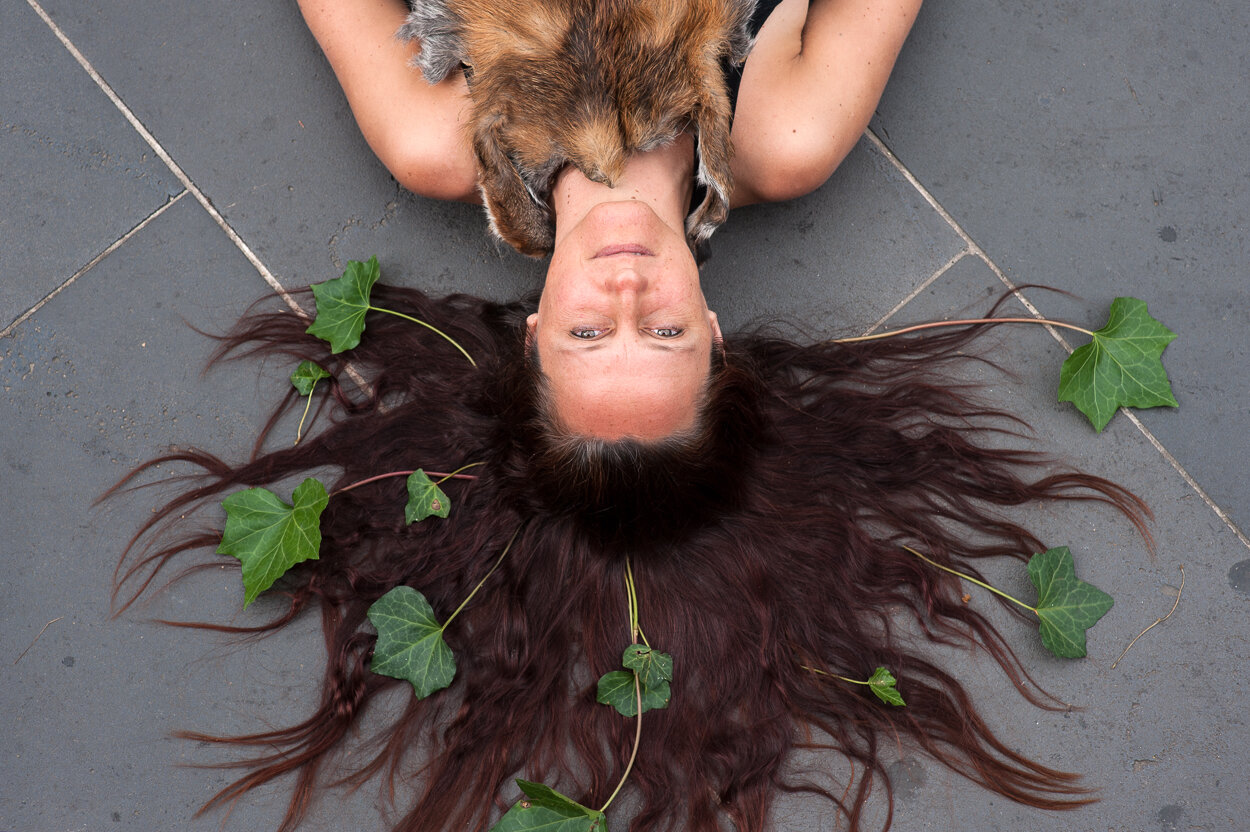
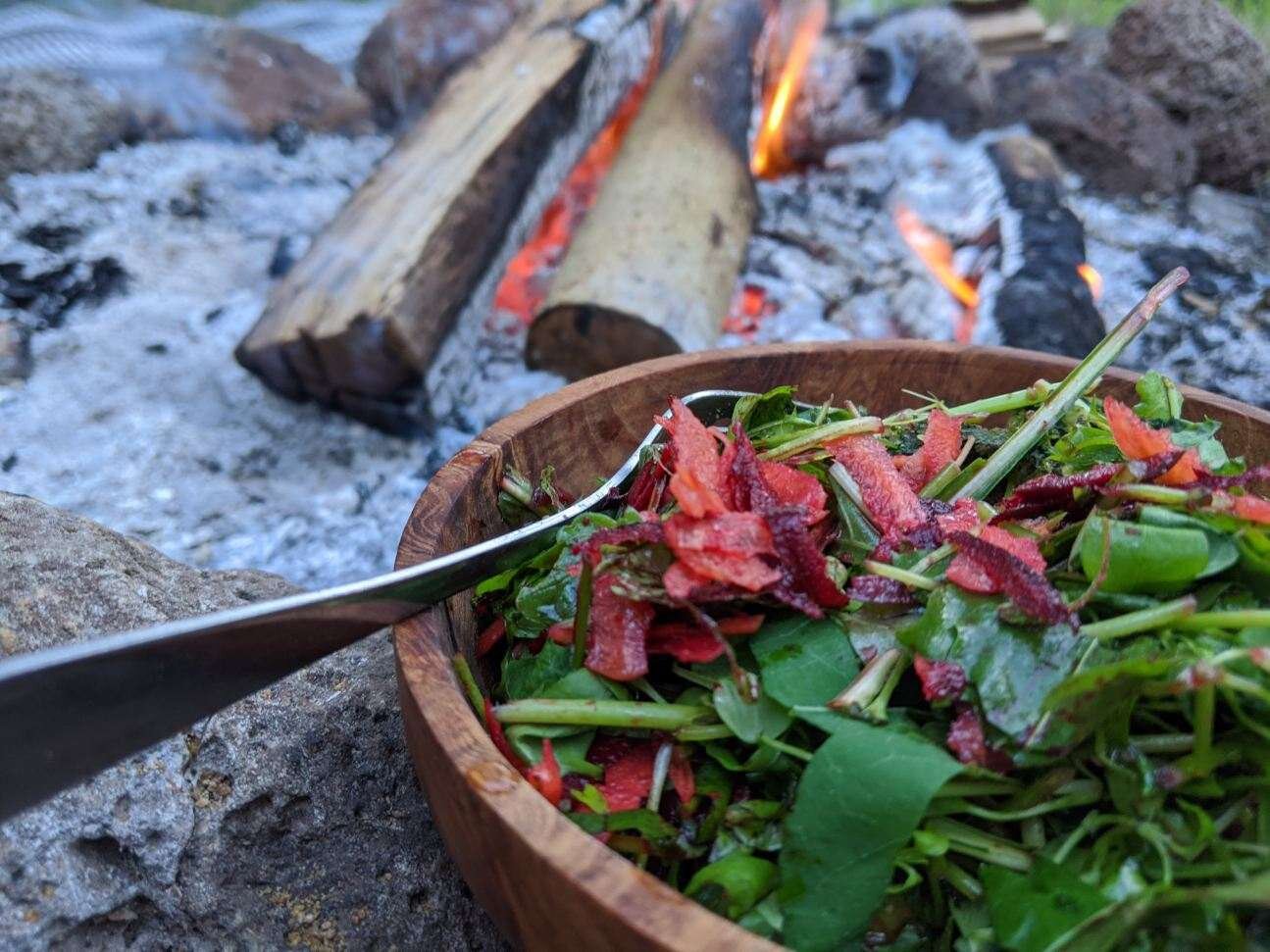
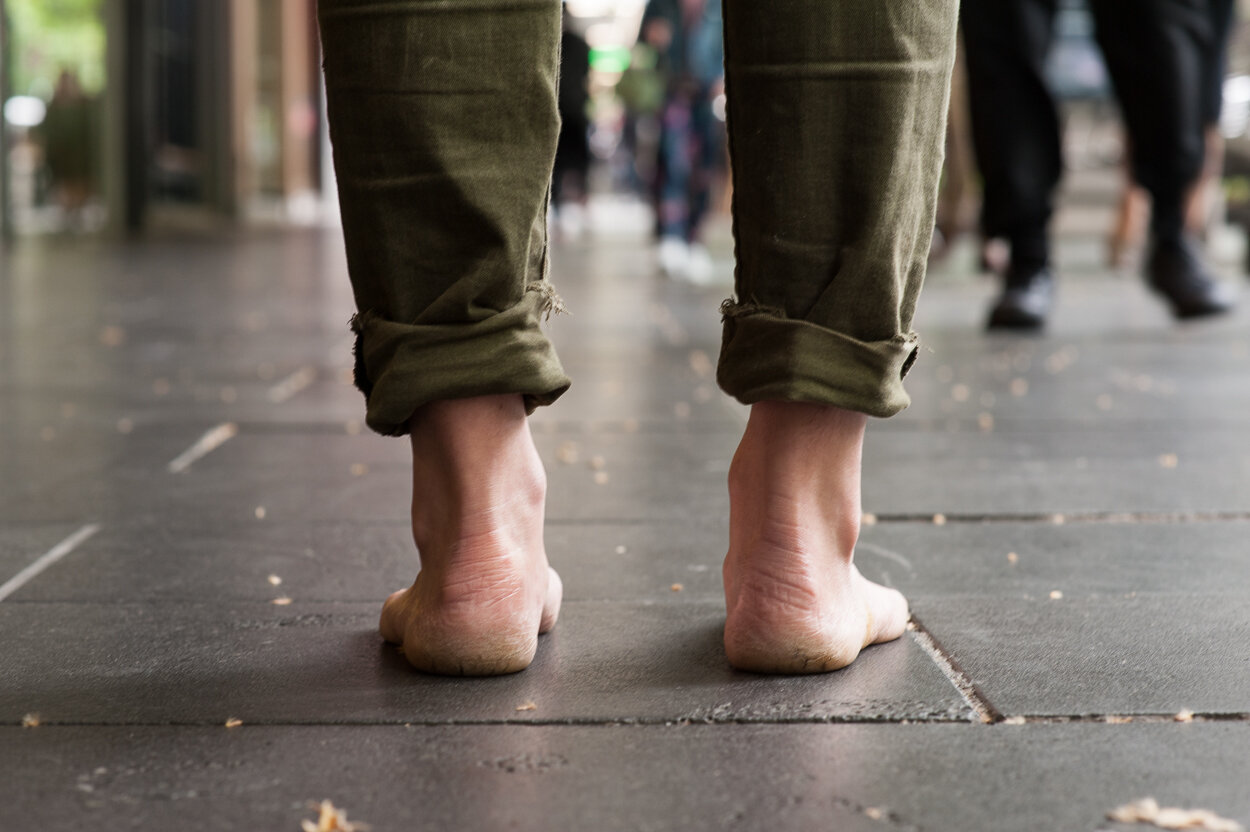
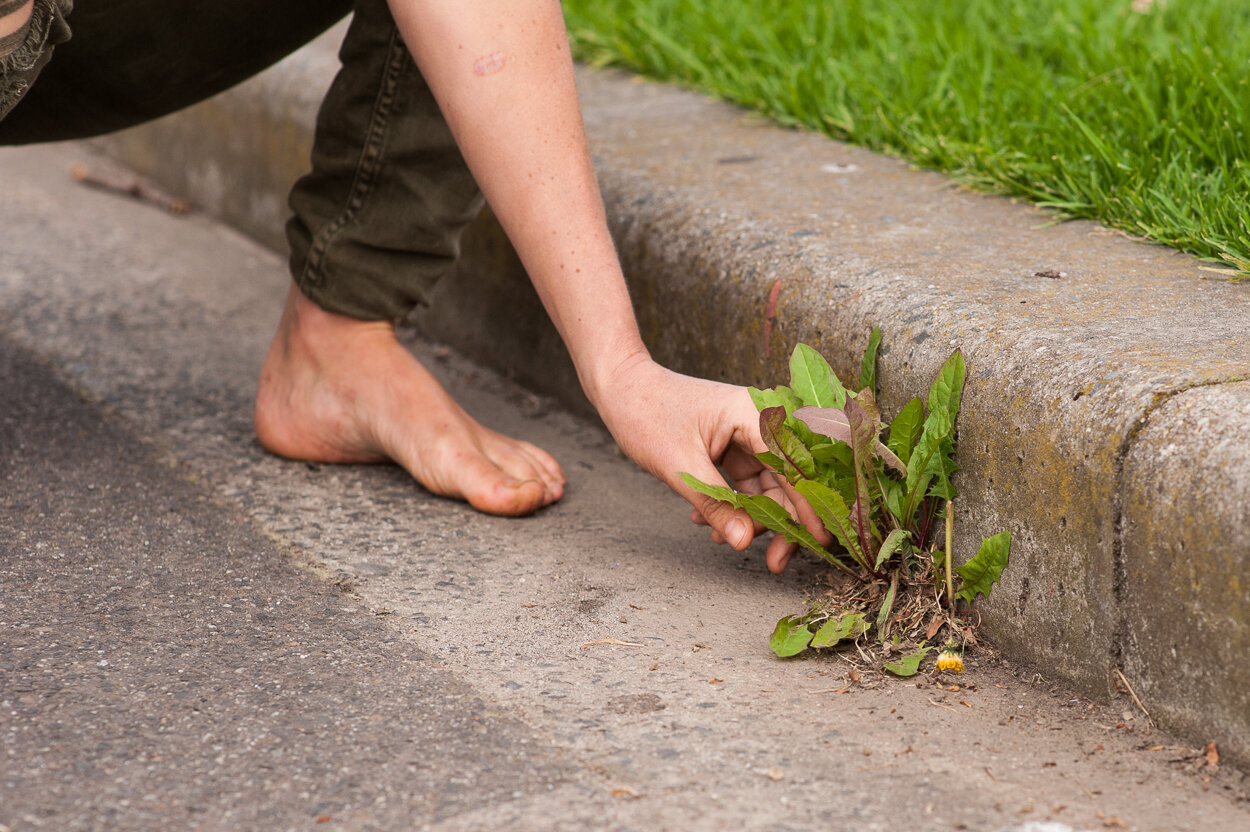
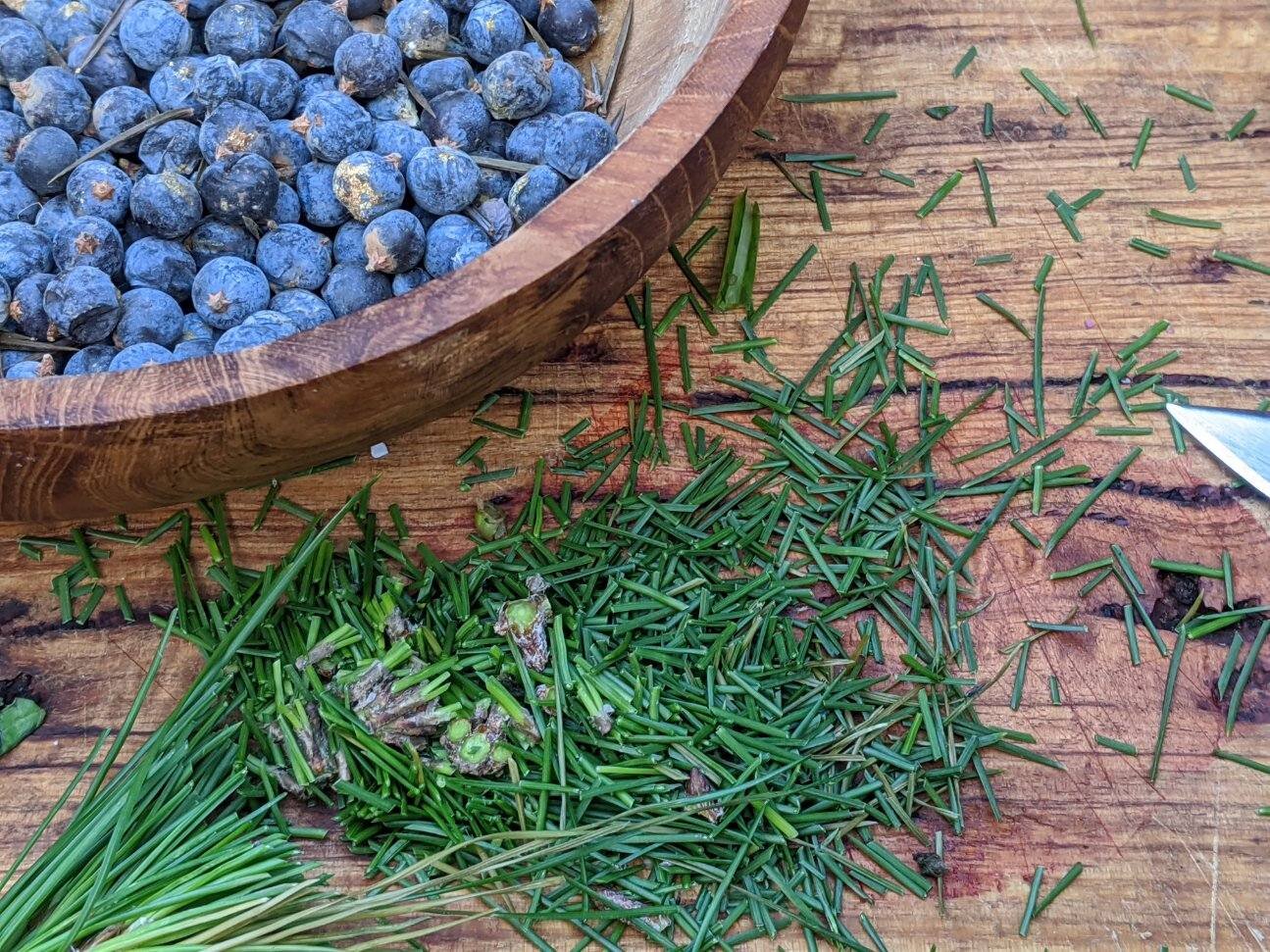
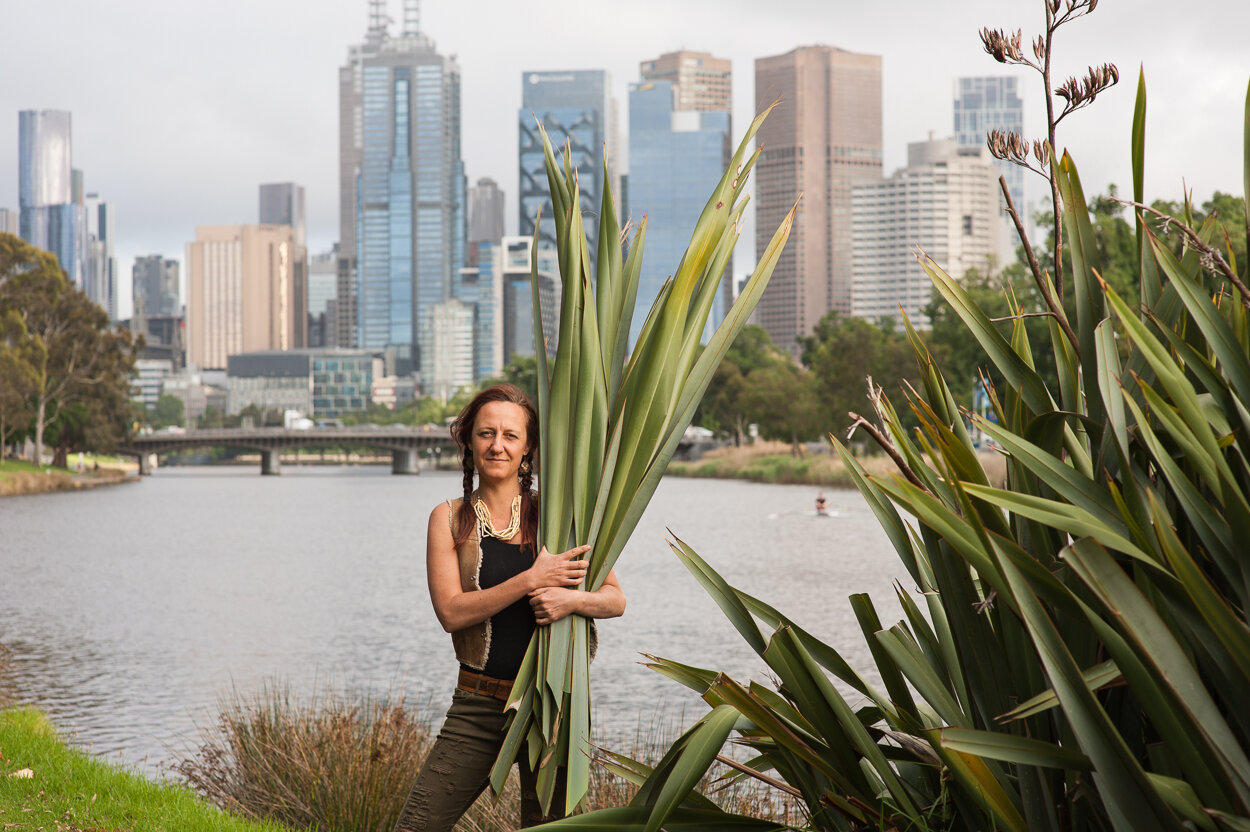
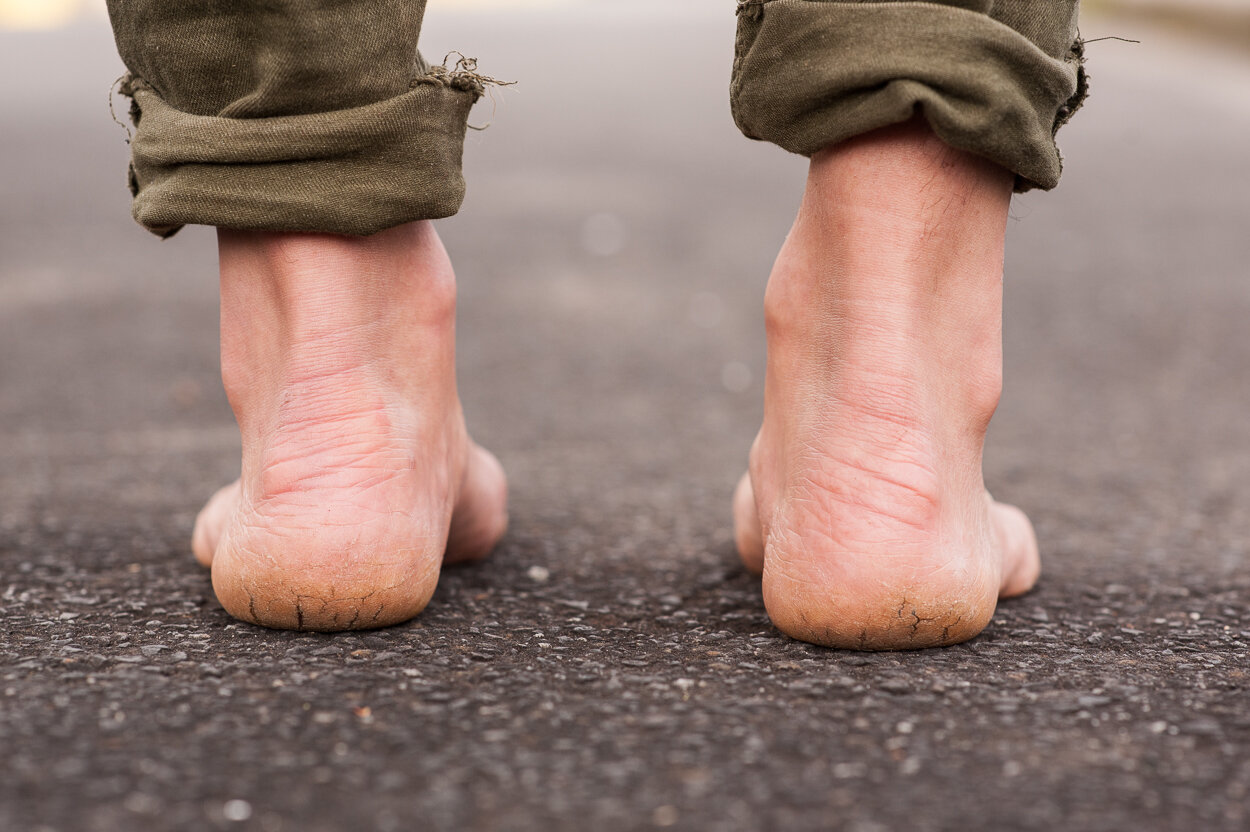
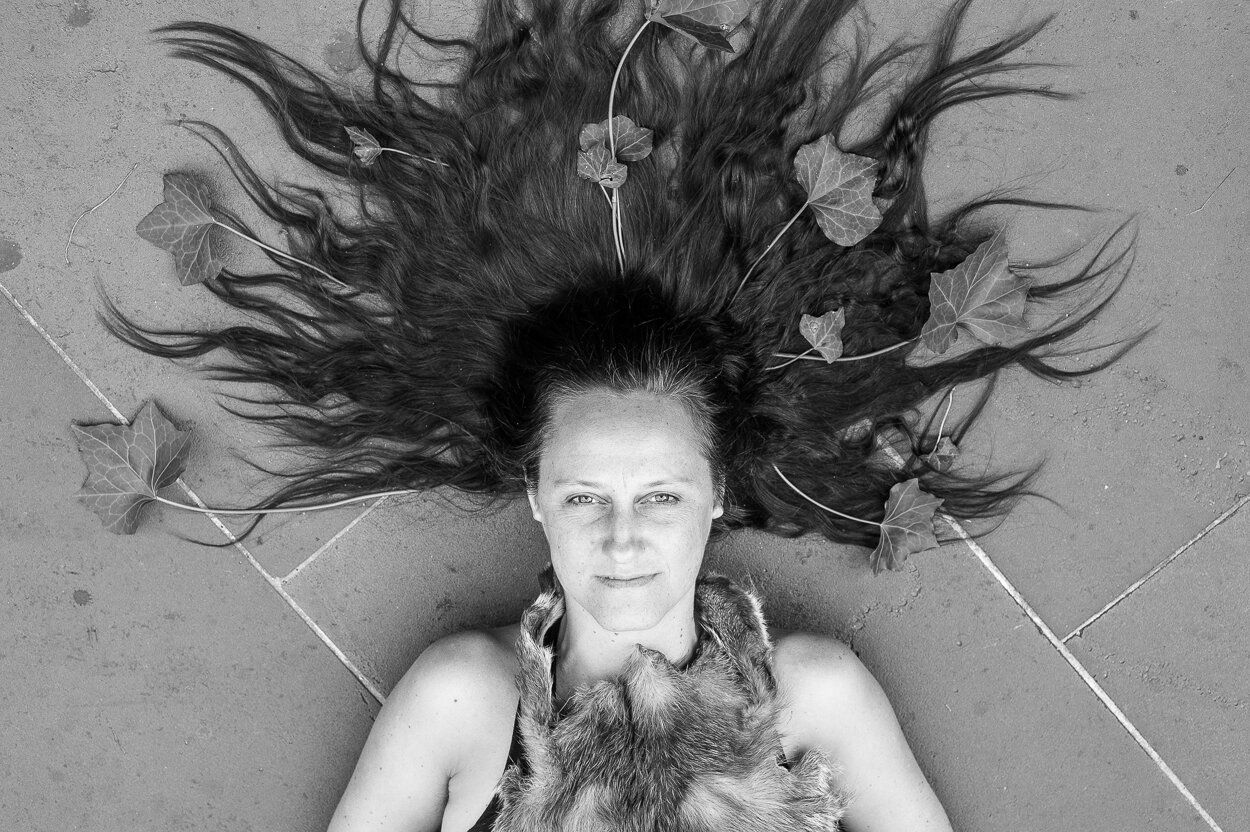
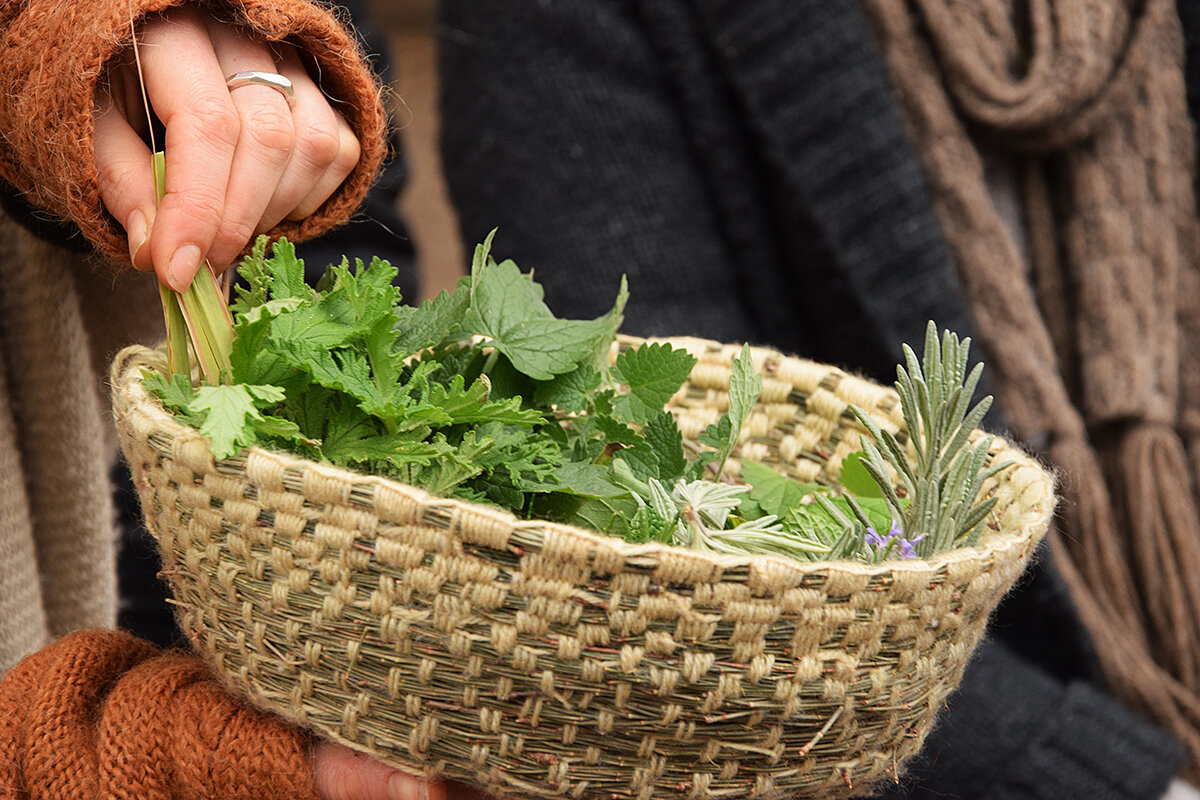
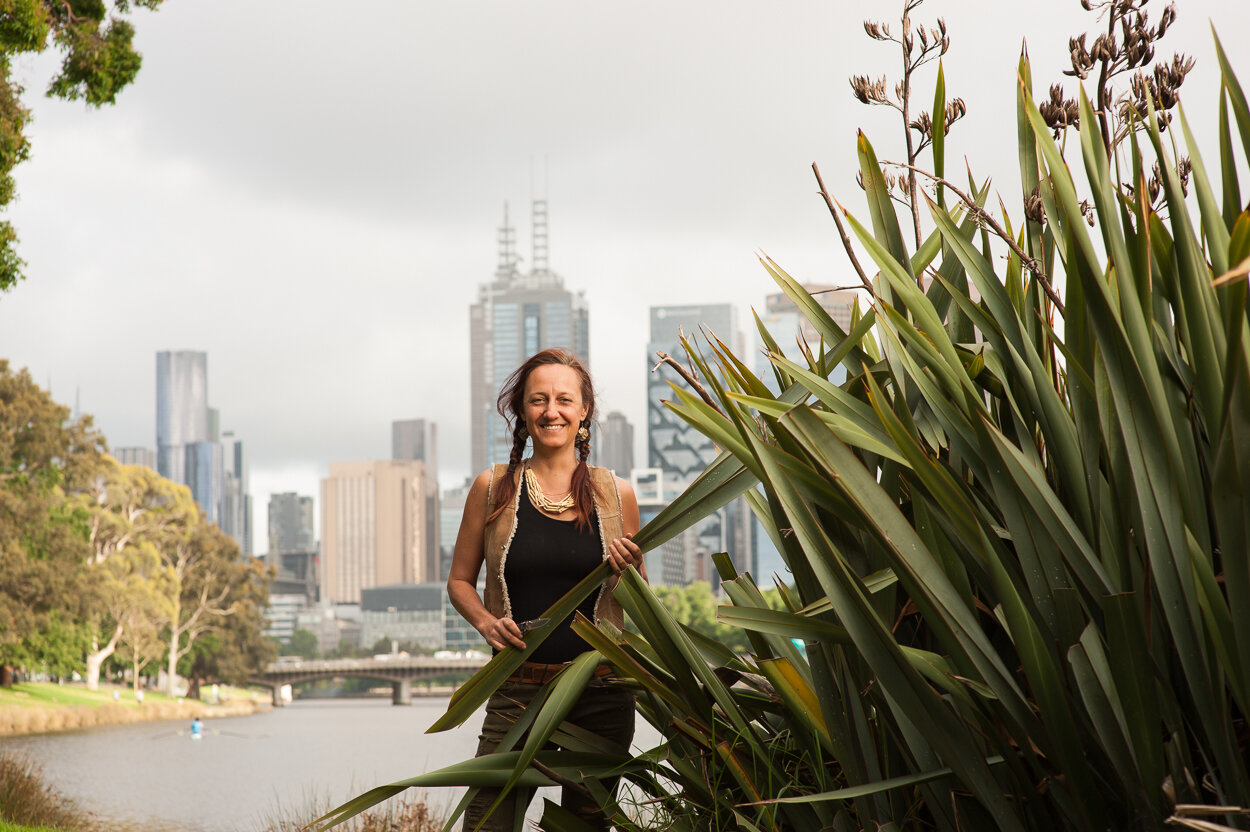
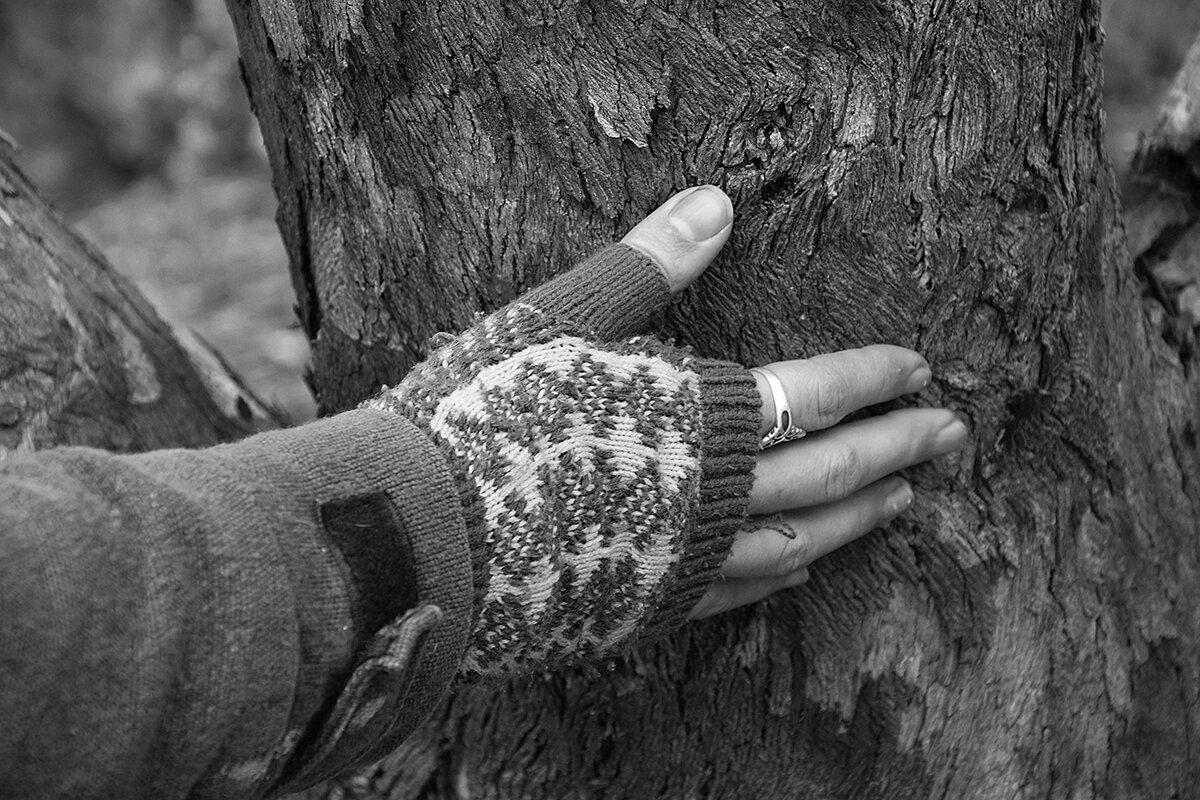
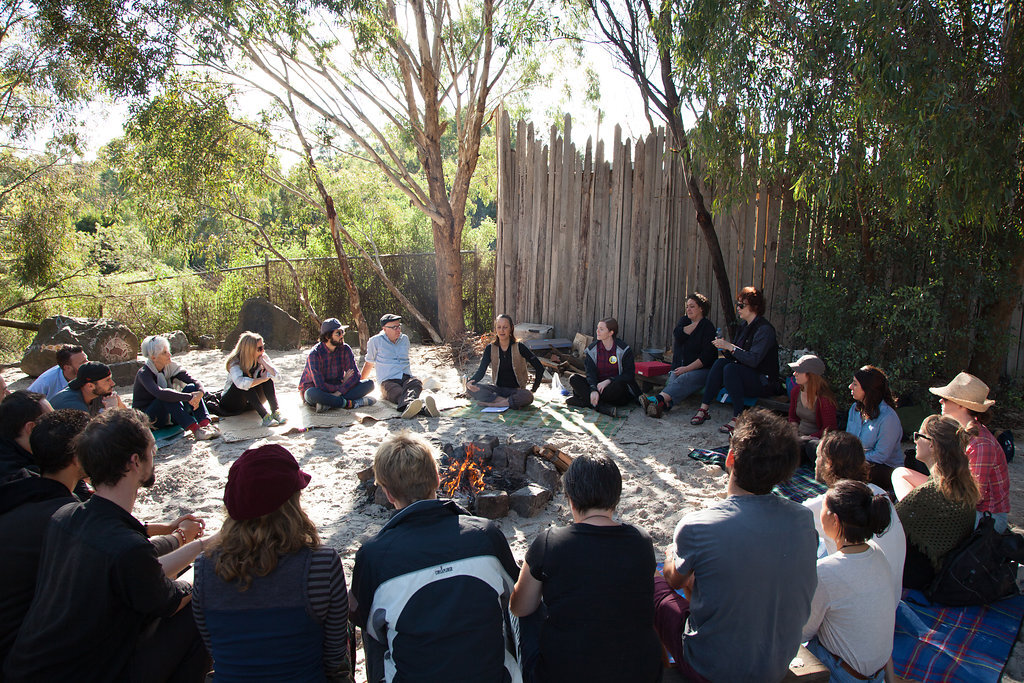
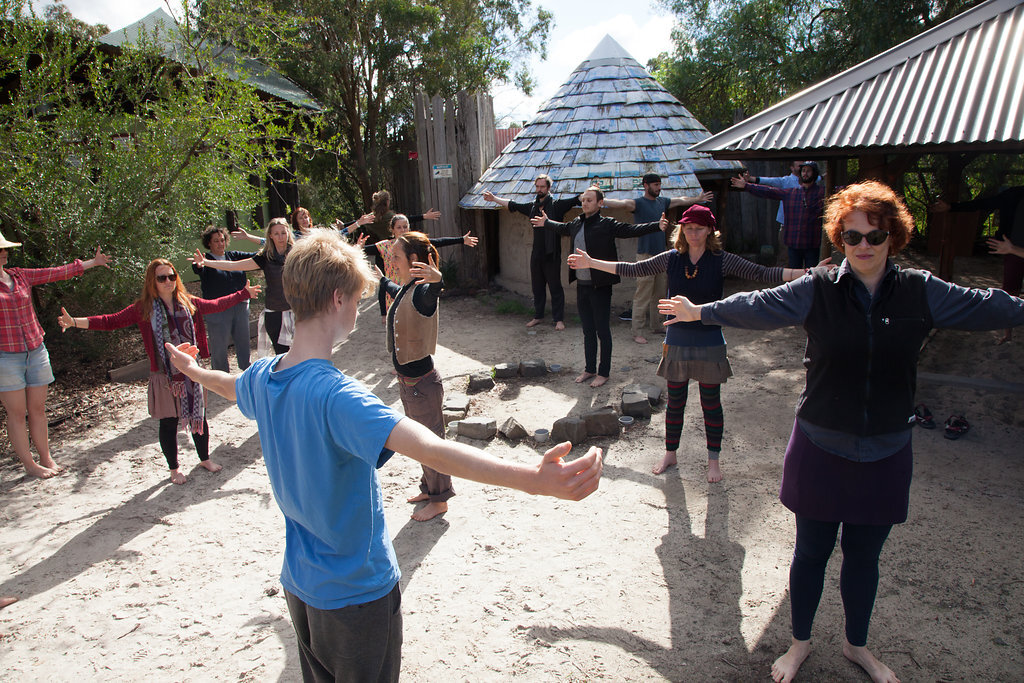
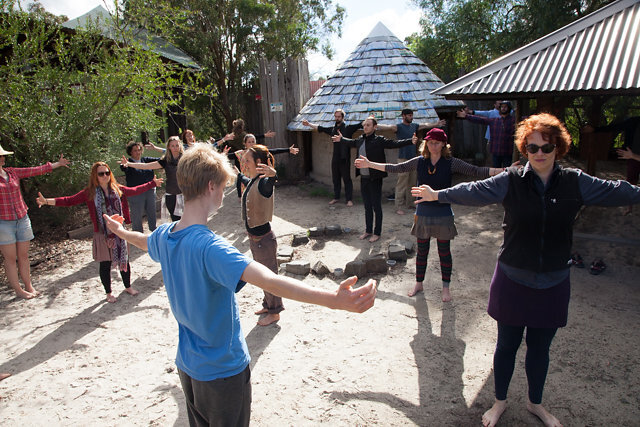
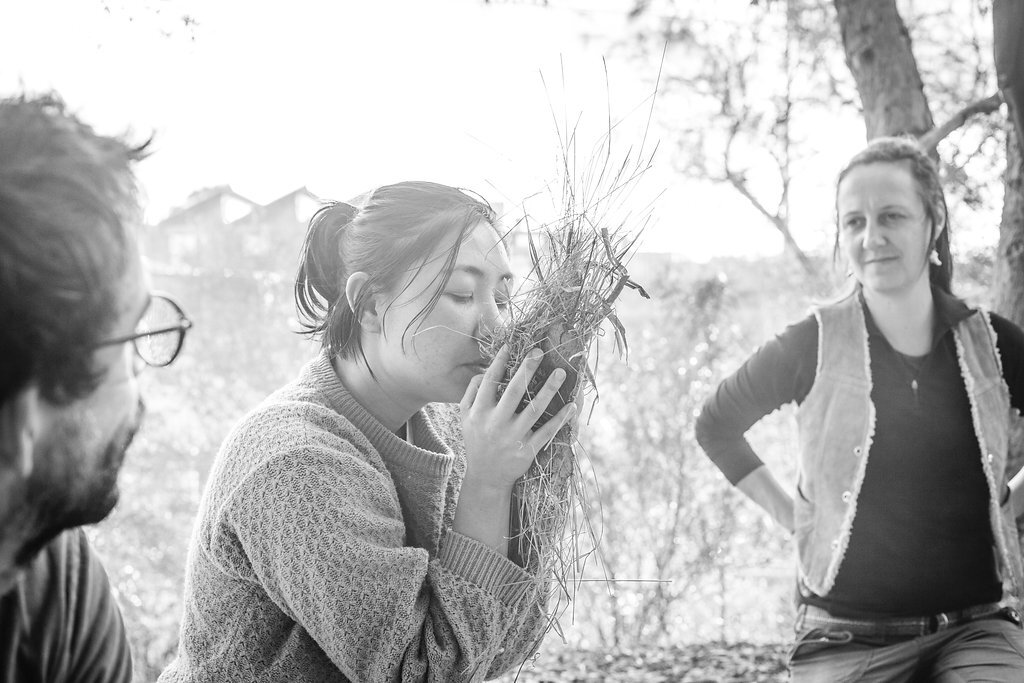
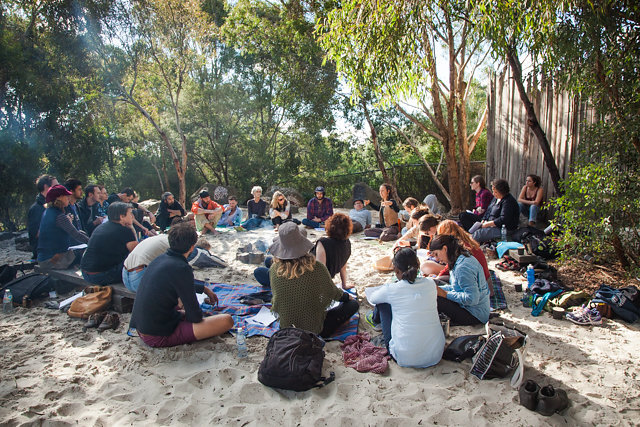
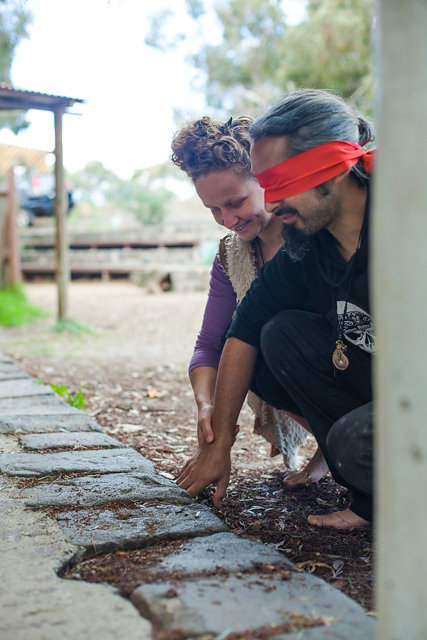
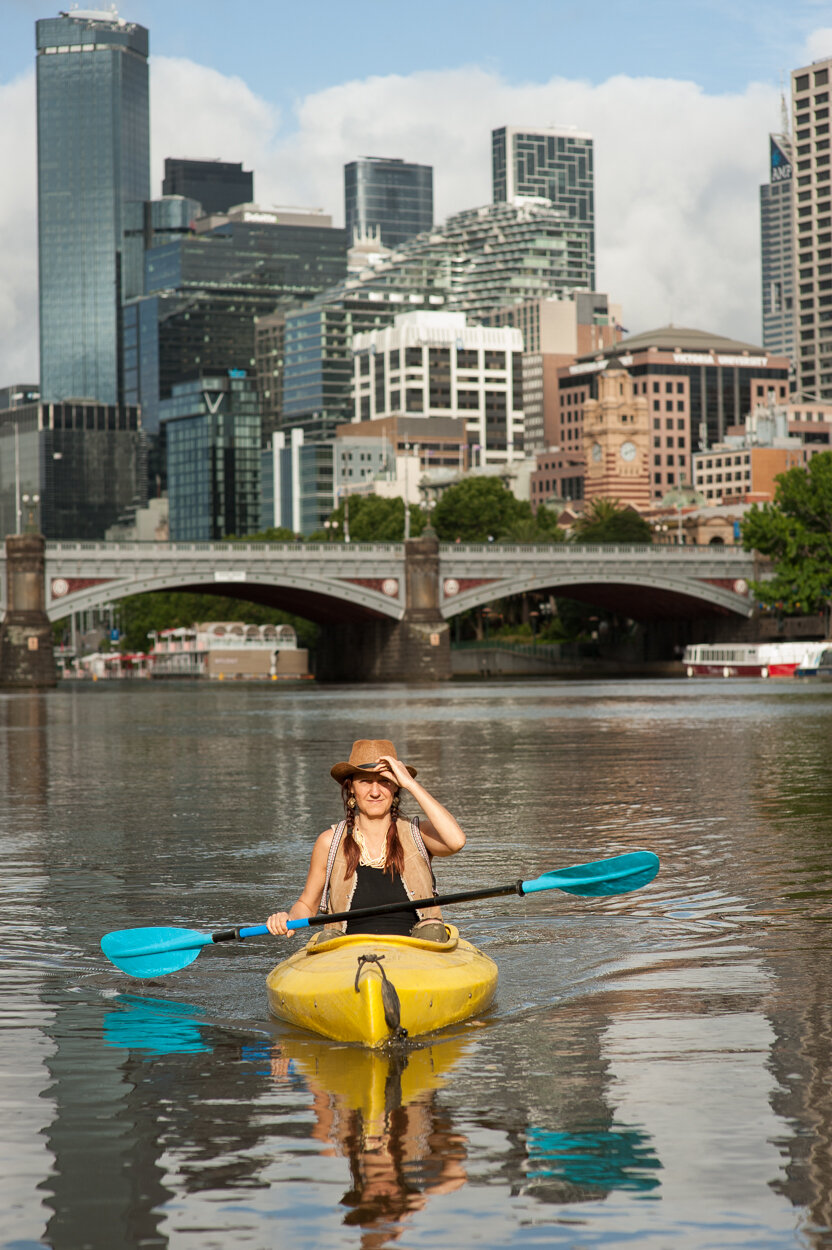
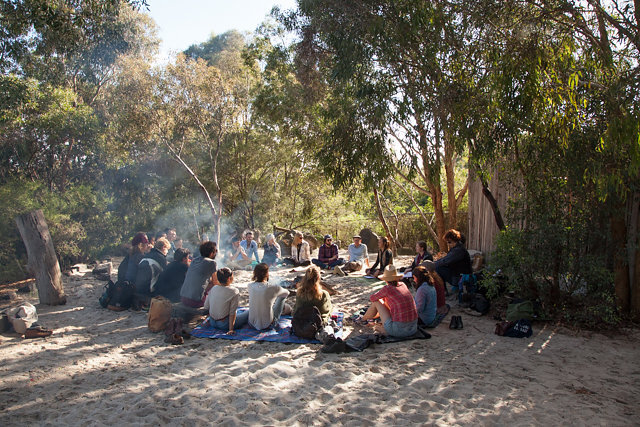
“In this beautifully written book, Claire Dunn encourages the reader to welcome back the fox woman with her untameable pelt and unfamiliar woody scent, to cherish numinous encounters, to fall in love with the world, to be enchanted once again. She inspires the possibility to wildness, both inner and outer, for all those living within city limits and beyond. Rewilding the Urban Soul will stir people’s souls, for sure.”
Reviews
‘Looking for what’s untamed and true, but you’re ensconced in the city? No need to leave town. The wild is all around you — and in you, and as you — and you could not have a more seasoned, engaging, or big-hearted guide than Claire Dunn, she who has devoted years to wandering trail, thicket, and waterway, as well as the urban wilds. No matter your address, this deeply wise and spellbinding book is your portal out of the Matrix and into the Real, into the windswept world as beloved, into the mysteries of both nature and your own psyche, a siren’s song you cannot afford to resist.’
RICHARD LOUV, AUTHOR OF OUR WILD CALLING AND LAST CHILD IN THE WOODS
‘Love makes us move to the city. Duty makes us stay. But how do we create a livable habitat for our bodies and spirits and relations in these murderous places? You might find the answer in this book.’
TYSON YUNKAPORTA, AUTHOR OF SAND TALK
‘In this beautifully written book, Claire Dunn encourages the reader to welcome back the fox woman with her untameable pelt and unfamiliar woody scent, to cherish numinous encounters, to fall in love with the world, to be enchanted once again. She inspires the possibility to wildness, both inner and outer, for all those living within city limits and beyond. Rewilding the Urban Soul will stir people’s souls, for sure.’
MIRIAM LANCEWOOD, AUTHOR OF WOMAN IN THE WILDERNESS AND WILD AT HEART
‘Claire Dunn, author of the classic My Year Without Matches, takes her next step into rewilding — the process of waking to the sit spot we call Earth. Even in cities, where the majority of people now live, we can still become indigenous to our universe. I was deeply moved by the eloquence of each page and the soul that fuels her words.’
BILL PLOTKIN, AUTHOR OF SOULCRAFT, WILD MIND, AND THE JOURNEY OF SOUL INITIATION
In Rewilding the Urban Soul, Claire asks an important question, “How can I expect us to fall in love with the world in the way that’s so needed if it’s dependent on going bush for a year? No, it has to be possible, right where we are.” A cliffhanger from that point on, Claire’s wonderful storytelling, research, and perspectives make it clear it’s not only possible, but it’s incredibly healing and fun! This book is essential for our times.’
JON YOUNG, AUTHOR OF COYOTE’S GUIDE TO CONNECTING WITH NATURE AND WHAT THE ROBIN KNOWS




